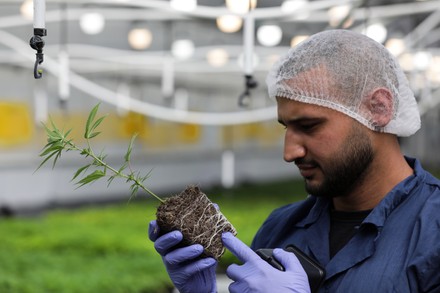Over the past decade, Israel became a global pioneer in medical cannabis. Its government-run program expanded rapidly, with over 140,000 patients licensed by 2024. But after reaching that peak, a surprising trend began: patient numbers started to fall.
A recent study published in the Journal of Cannabis Research traces this rise—and the reasons for the recent decline.
From a Handful to a Health Movement
Back in 2011, just 3,097 Israelis held a medical cannabis license. By January 2024, that number had soared to 140,483—a staggering 4,400% increase.
This growth was driven by several key reforms:
- Decentralized prescribing (2020): Licensed doctors, not just a small committee, could issue prescriptions.
- Per-product pricing (2019): Patients bought cannabis in pharmacies, opening the market to competition.
- Expanded access: New conditions like PTSD, epilepsy, and autism spectrum disorder were approved for treatment.
The leading use? Chronic non-cancer pain (CNCP), accounting for over 60% of patients in 2025. Post-traumatic stress disorder (PTSD) was the second most common, reflecting Israel’s long history of conflict.
The Sudden Decline: What Happened After 2024?
Despite years of growth, the number of active cannabis patients dropped 7.5% in just 15 months after reaching its peak in January 2024.
Why?
In April 2024, Israel launched a Health Maintenance Organization (HMO)-led reform, shifting prescription power for most conditions from the government to public health funds (HMOs). Only CNCP and PTSD remained under the central cannabis unit’s oversight.
Researchers believe the decline reflects several factors:
- Stricter gatekeeping by HMOs
- Transition delays and administrative friction
- Crackdowns on irregular licenses—including one doctor who reportedly issued over 13,000 licenses on his own
Cannabis Costs and the Market Boom
Before 2019, patients paid a flat monthly fee. After the reform, prices varied by dose and product type, leading to steep increases for higher doses.
By 2024, Israel’s medical cannabis market was worth an estimated $252–$684 million annually, with flowers making up 94% of sales. Imports—mostly from Canada—added pressure to local growers, some of whom petitioned the government to limit overseas supply.
Who Uses Medical Cannabis in Israel?
- 62% are men, a gender gap that may reflect higher PTSD rates in male combat veterans and possibly more side effects in women.
- Older adults dominate the user base, particularly those with chronic pain.
- Most prefer smoking dried cannabis flower—despite official guidelines recommending oils or inhalers.
Missing Data and Policy Blind Spots
The study warns that Israel’s cannabis system now suffers from data fragmentation, especially after the HMOs took over. Monthly reports have become less transparent, and it’s unclear how many HMO-issued prescriptions now exist.
Without consistent national data, it’s difficult to assess whether patients are getting the care they need—or whether they’re dropping out of the system altogether.
What’s Next?
Israel’s model remains a benchmark worldwide, blending regulation, research, and patient access. But as the country decentralizes control, the cannabis program faces new challenges: maintaining oversight, ensuring fairness, and protecting patient access.
The lesson? Even the most advanced cannabis system needs regular checkups.
Related Reading
For more insight into the evolving cannabis landscape worldwide, explore our other analyses:
- Delta-8 THC and the Future of Cannabis Prohibition — an in-depth look at how new cannabinoids challenge outdated laws.
- Meta Lifts the Cannabis Search Ban on Facebook and Instagram — how social media policy is catching up with legalization.
- Thailand Tightens Cannabis Laws After Tourist Smuggling Cases — a cautionary tale of rapid legalization and regulatory backlash.
FAQ: Understanding Key Terms
What is Chronic Non-Cancer Pain (CNCP)?
CNCP refers to persistent pain lasting more than three months, not caused by cancer. It includes conditions such as arthritis, neuropathy, or back pain and is the most common reason for medical cannabis use in Israel.
What are Health Maintenance Organizations (HMOs)?
In Israel, HMOs are public health insurance funds that provide medical services to all citizens. Since 2024, HMOs have taken over most medical cannabis prescription responsibilities from the government.
What is the difference between cannabis “flower” and “oil”?
“Flower” refers to the dried buds of the cannabis plant, usually smoked or vaporized. “Oil” is an extract that can be taken orally or in capsules. Each has distinct effects, dosing methods, and side-effect profiles.
Why is PTSD treated with cannabis in Israel?
PTSD is prevalent among Israeli veterans and civilians exposed to trauma. Although research remains inconclusive, many patients report relief from anxiety and insomnia when using cannabis.

